Today we are looking at the same collapsed retaining wall ruins that we looked at last week but we’re looking at the other side of the area of the retaining wall. At this particular area a lot of the earth which was retained by the retaining wall is still in its original place. Interestingly though you can see an extreme amount of plant roots and those plant roots, although the wall is gone, have largely stayed in a similar shape as when the wall was in place. The roots tell a particular story and you can learn a lot about the kind of deterioration and degradation caused by plants and associated roots just from looking at these photographs. The images are actually a bit shocking because the severity of the brick joint deterioration is obvious even though the wall has already collapsed and has now been cleaned and all the way gone.
The outline of this discussion follows:
- Historic Masonry Construction
- Mechanisms of Masonry Deterioration
- Advanced Deterioration Signs
- Limitations of Surface Repointing
- Comprehensive Masonry Restoration
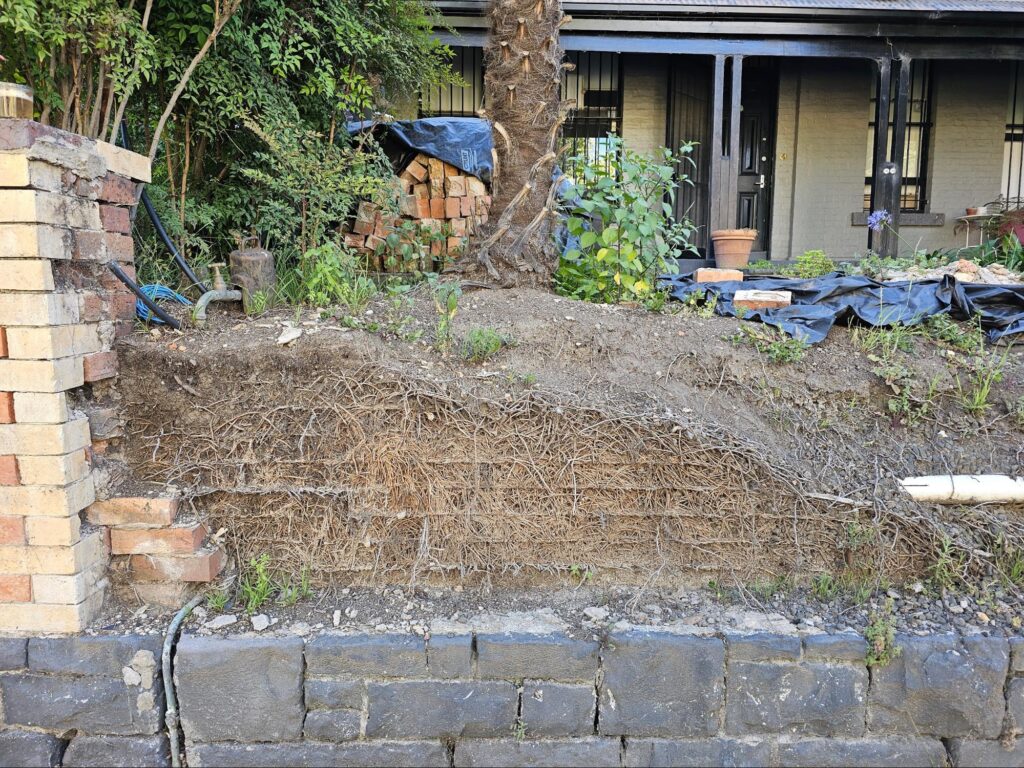
Table of Contents
ToggleHistoric Masonry Construction
Historic masonry structures like retaining walls were constructed from materials including brick, natural stone, and lime mortar. Brick and stone masonry units provided the structural stability and outward facing for walls, while mortar served as the sacrificial binder between units.
Lime mortar was the prominent type of mortar used in older historic masonry construction. It was composed of lime, sand, and water. The lime acted as the binding agent, provided plasticity for workability, and enabled gradual curing through carbonation. However, lime mortar lacks inherent water resistance. This required historic masonry walls to be wide and rely on stability garnered through mass for moisture protection, in the case of a retaining wall.
Without modern waterproof membranes or drainage provisions, the integrity of historic masonry depended wholly on the quality of materials, climate and associated precipitation, and the site grade and configuration. Any water infiltrating the wall could become trapped, leading to slow deterioration. The lime mortar joints were and are, in other historic locations, particularly vulnerable, as lime physically slowly erodes and chemically breaks down through excessive hydration.
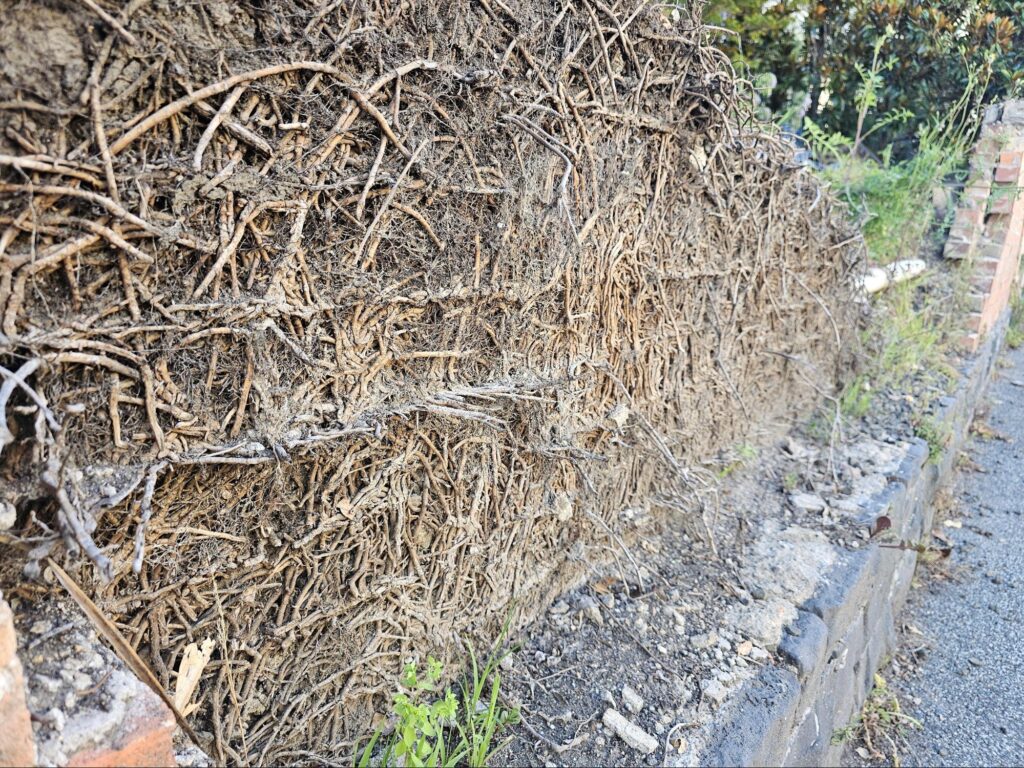
Early masons used techniques like widened sloped joints, strategic orientations, variable mortar mixes, and minimized use of Portland cement to manage moisture. But deterioration was inevitable without comprehensive moisture control strategies integrated into the wall and site drainage design.
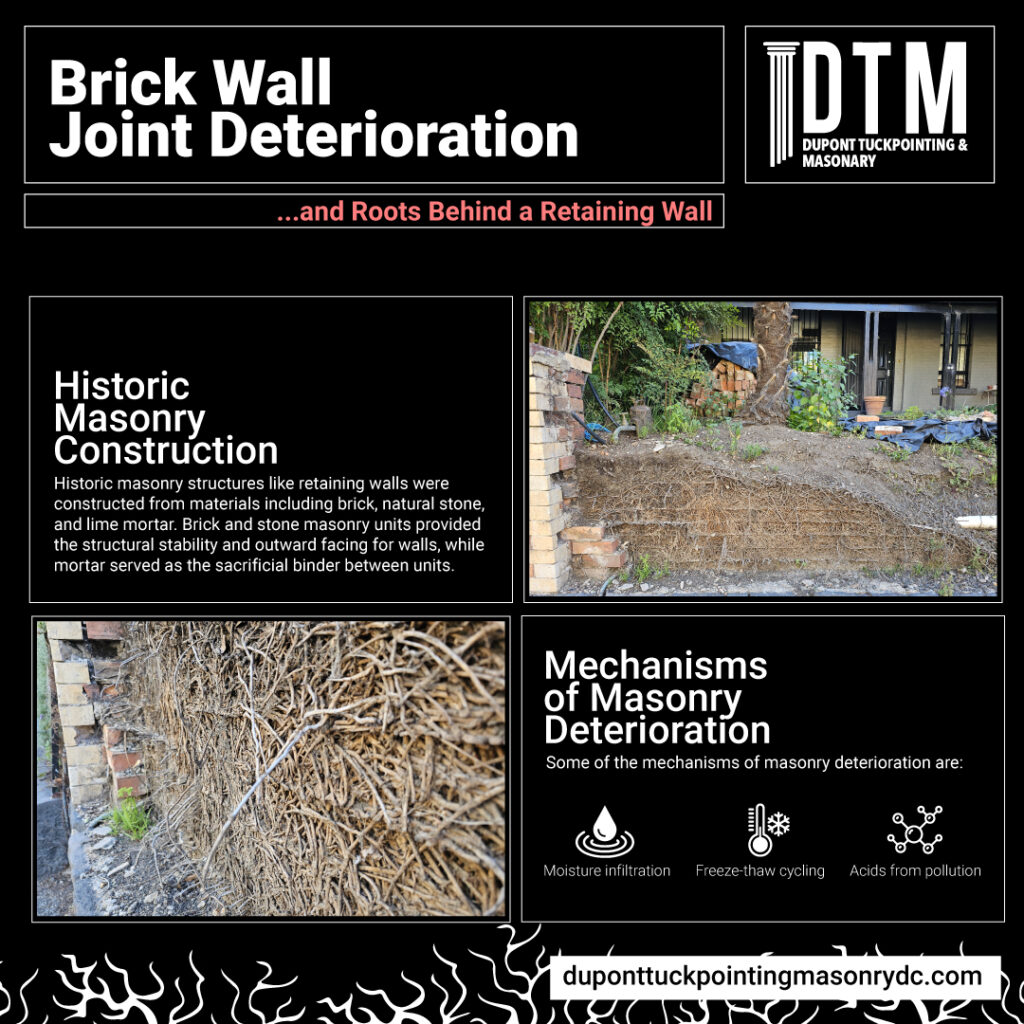
Mechanisms of Masonry Deterioration
Several mechanisms contribute to the deterioration of historic masonry over time when left unmaintained, especially in the absence of water management provisions.
Moisture infiltration is the foremost threat to historic masonry strength. Water penetrating the porous materials causes lime leaching, spalling, staining, and corrosion of embedded metals. Freeze-thaw cycling exacerbates the damage.
Pools of water building up behind walls also generate immense hydrostatic pressure. This constant outward force stresses joints and destabilizes the wall over time. Without drainage weep holes, the pressure is unrelieved.
Chemical breakdown of lime mortar occurs as moisture triggers leaching of free lime. Soluble salts like sulfates penetrate the lime and cause dispersive expansion and crumbling. Acids from pollution also dissolve lime binders.
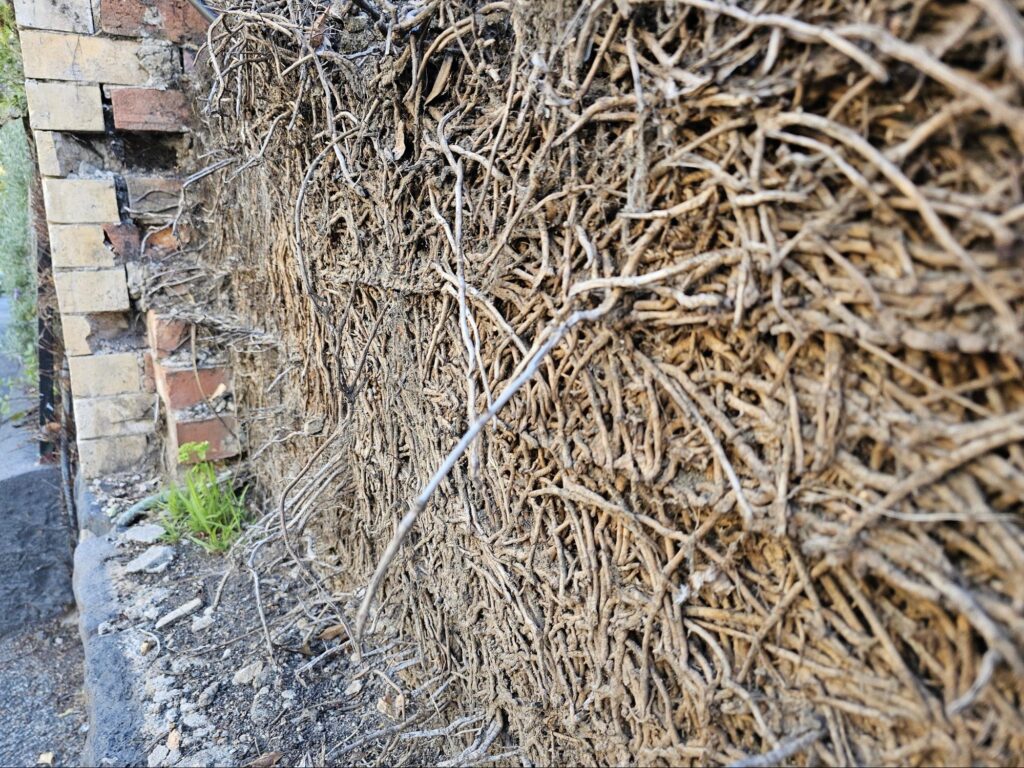
Unprotected exterior masonry units are eroded by rainfall, wind, vegetation roots and tendrils. Sunlight and thermal movements stress the materials. Unchecked vegetation retains moisture and inserts root pressures.
Deterioration typically advances from the rear of the wall where moisture exposure is greatest. As mortar joints near the back weaken and deteriorate, structural stability declines. The deterioration propagates forward until surface damage is visible.
Advanced Deterioration Signs
By the time surface damage from deterioration becomes visible on historic masonry, significant unseen damage has already occurred internally. Subsurface mortar joints and structural materials may be severely compromised.
Typical visible signs include eroded joints, cracked brick/stone, staining, bulging, and bowing. These represent advanced deterioration requiring major repairs.
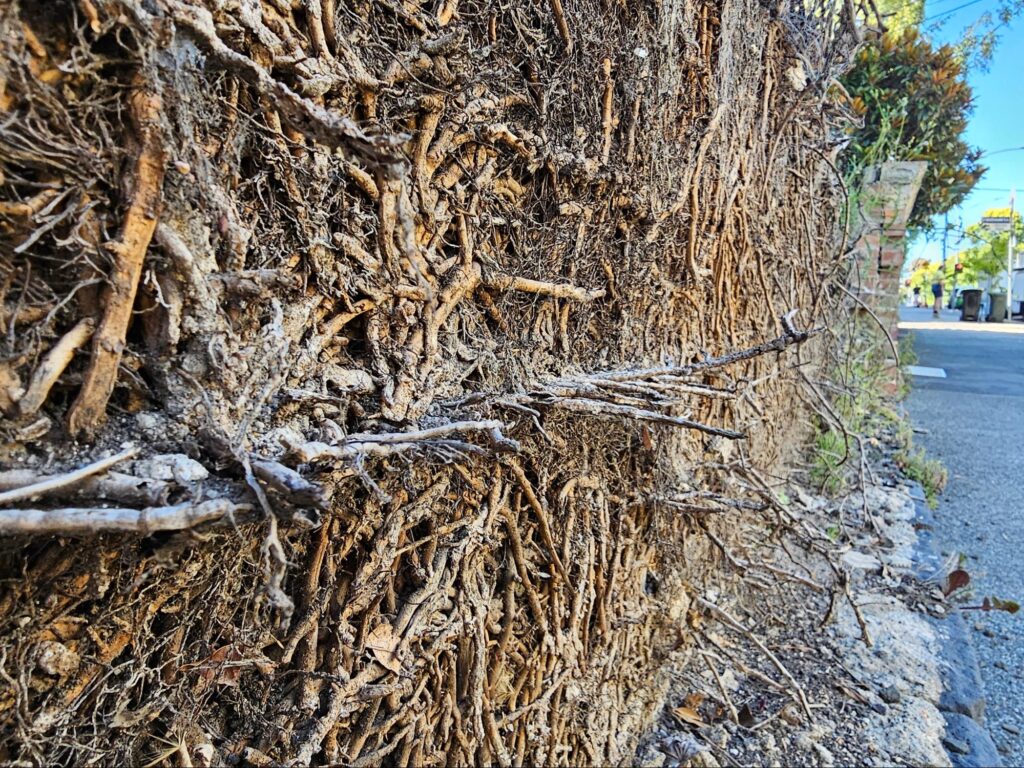
However, earlier subsurface stages can be detected through careful inspection and sounding. Identifying deterioration before surface manifestation allows for less extensive remediation.
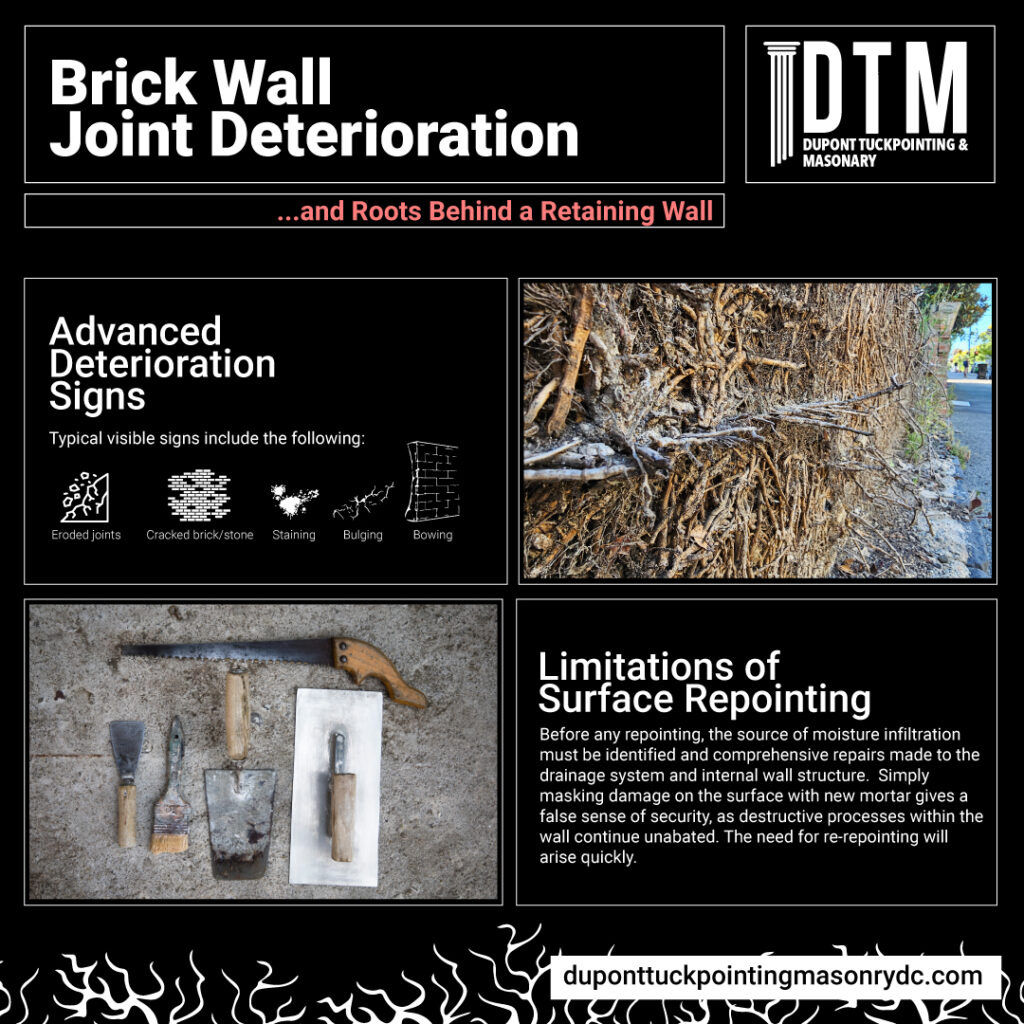
Core samples may be extracted to directly observe the wall’s internal condition. Analyzing deterioration progression chronologically provides insight on mechanisms and also informs repairs.
Limitations of Surface Repointing
While restoration of a historic masonry wall with fresh repointed mortar joints may seem like a straightforward solution, this superficial fix does not address core deterioration issues. While repointing and or tuckpointing are essential, if the underlying damage from moisture, hydrostatic pressure, and material aging is not mitigated first, surface repointing will ultimately fail as deterioration continues internally.
Before any repointing, the source of moisture infiltration must be identified and comprehensive repairs made to the drainage system and internal wall structure. Simply masking damage on the surface with new mortar gives a false sense of security, as destructive processes within the wall continue unabated. The need for re-repointing will arise quickly.
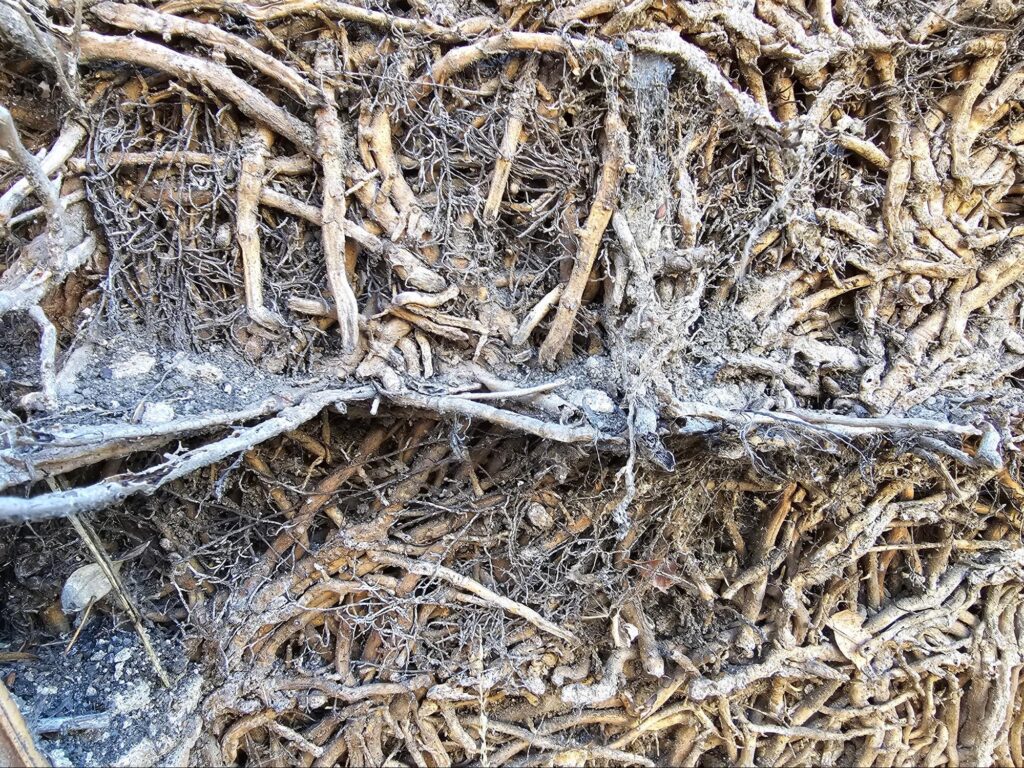
Comprehensive Masonry Restoration
A holistic approach to restoration is required to stop masonry deterioration and achieve lasting repairs. Surface repointing by itself is inadequate. First, the site drainage must be improved to divert moisture away from the wall. Waterproofing membranes or drainage mats installed against the wall interior provide a moisture barrier.
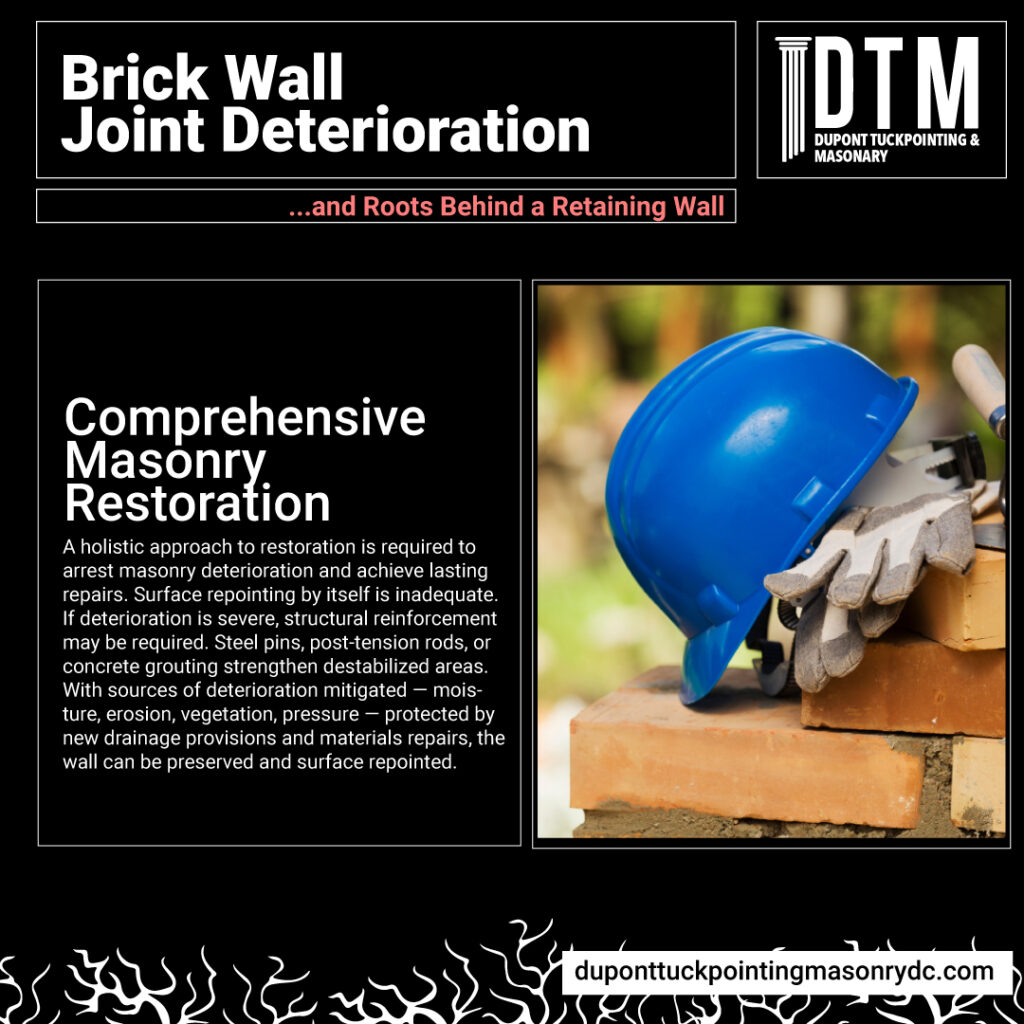
Weep holes and perforated collection pipes drain away trapped water, relieving hydrostatic pressure. Damaged masonry units are replaced with matching bricks or stones. Mortar joints are raked out and repointed properly.
If deterioration is severe, structural reinforcement may be required. Steel pins, post-tension rods, or concrete grouting strengthen destabilized areas. With sources of deterioration mitigated — moisture, erosion, vegetation, pressure — protected by new drainage provisions and materials repairs, the wall can be preserved and surface repointed.
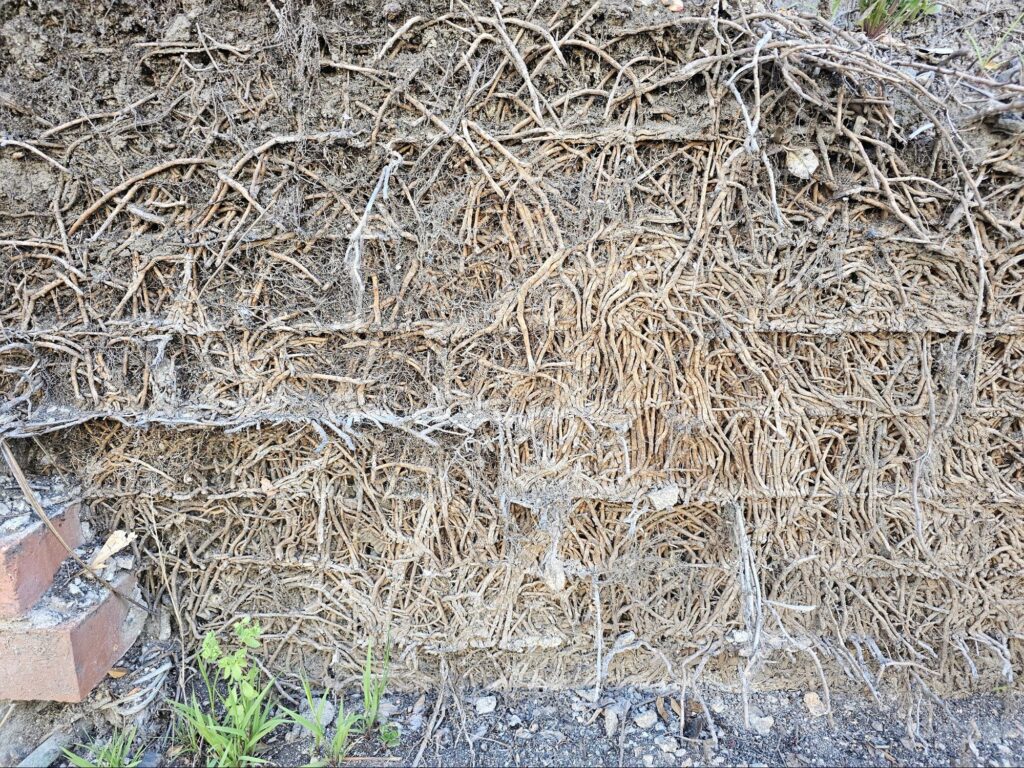
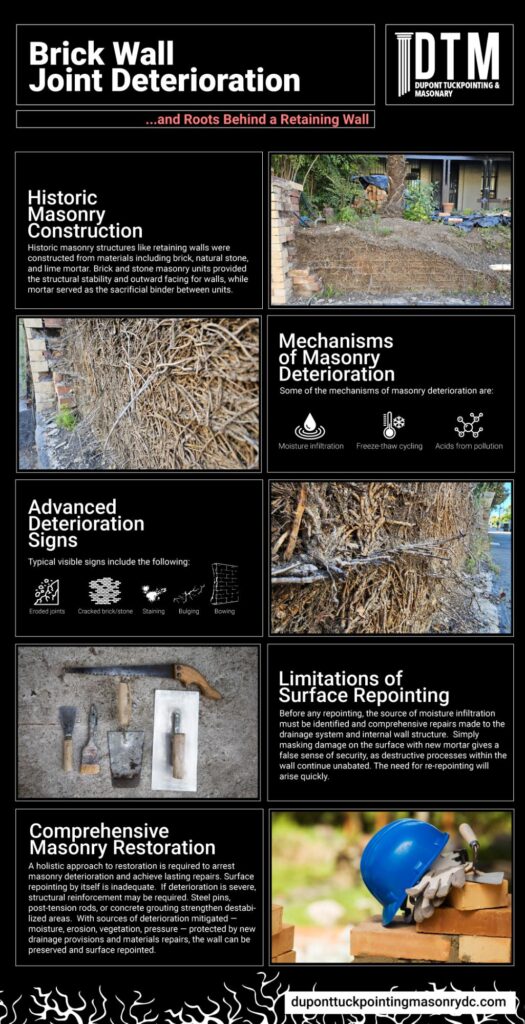
The comprehensive process requires greater initial investment but delivers lasting repairs. Skipping steps by only repointing the surface leads to premature failure. Integrated restoration preserves historic masonry legacies.
Our Company and Upcoming Articles
As specialists in masonry restoration, our company has the expertise to manage and prescribe wholistic and precise preservation work plans for historic brick and stone structures. Our team is highly trained and qualified in critical areas like repointing mortar joints, tuckpointing, and restoring deteriorated masonry. With decades of collective experience working on iconic historic buildings in Washington DC, we take pride in our quality craftsmanship. Together with our clients, we can develop custom solutions to repair and maintain the structural integrity and historic charm of your building. Our team has tackled some of the toughest challenges, so you can rely on our skills for your masonry restoration project.
In an upcoming series of articles, we will examine the English brick bond, and the Flemish brick bond and comparison and contrast between this type of brick Bond in other of the most common type of brick bonds in historic masonry and the type of associated mortar joints used with different types of brick bonds common particularly with pressed brick generally set in a running Bond.
Follow us as we look at the science behind aging masonry and discover solutions to slow deterioration and maintain the structural integrity of our cherished historic buildings here in Washington, DC. Contact us today.




